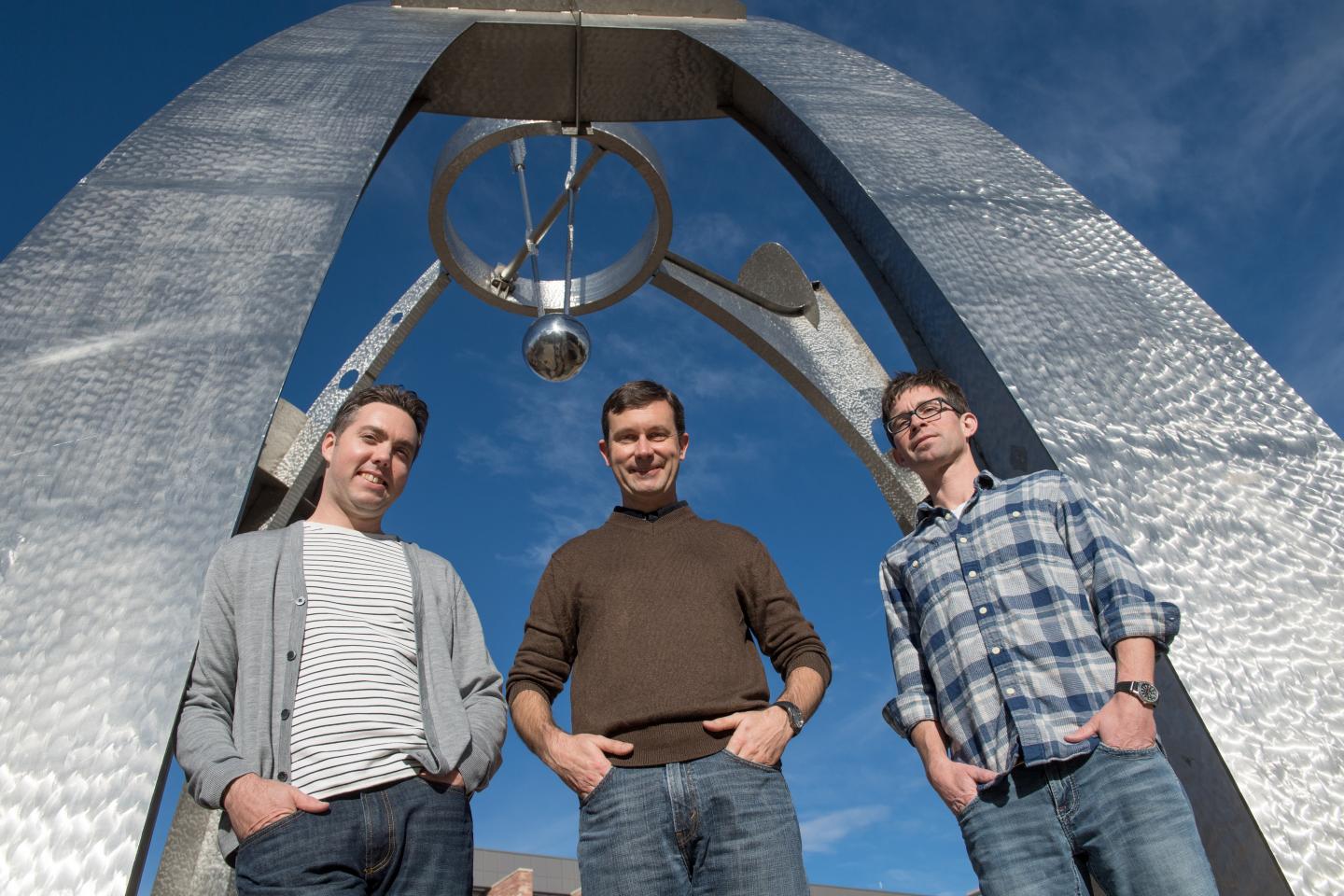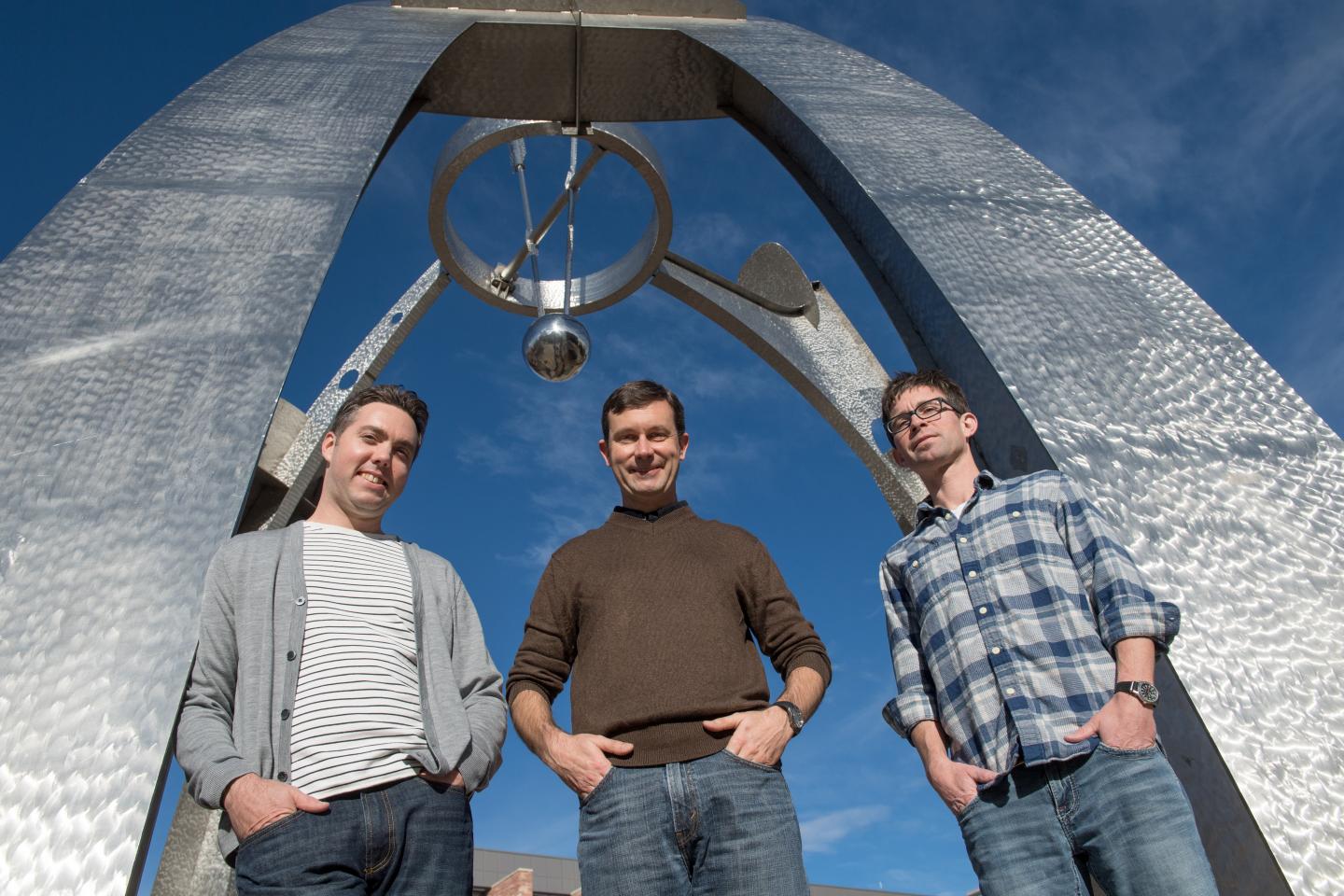
Credit: John Eisele/CSU Photography
The National Institute of General Medical Sciences, part of the National Institutes of Health, created a new way of funding science in 2015 that allows researchers the freedom to take on ambitious challenges and approach problems creatively, without many strings.
Three researchers from Colorado State University — Lucas Argueso, Tai Montgomery and Tim Stasevich — are among the 93 scientists across the country who recently received this innovative grant. The new model, Maximizing Investigators' Research Award, or MIRA, supports scientists' overall research programs through a single, unified grant.
The total amount received by the CSU team is $5.4 million over the next five years.
All three researchers are Boettcher Investigators, recipients of the Webb-Waring Biomedical Research Award from Boettcher Foundation, a program designed to support early-career scientists in Colorado who conduct significant, impactful research to advance knowledge and positively impact human health. One of the main goals of this award is to position new investigators to compete for major federal and private awards.
Lucas Argueso
Lucas Argueso is an associate professor in the Department of Environmental and Radiological Health Sciences in the College of Veterinary Medicine and Biomedical Sciences. His MIRA award will support a project that explores "Mechanisms and Phenotypic Consequences of Structural Genomic Variation."
Argueso will explore what causes the structure of genomes to change over time, and the consequences of these large-scale changes to living organisms. This includes studying how chromosomes can change in various processes in life, and how these changes can sometimes lead to disease. He plans to investigate the forces that cause chromosomes to break, and the cellular mechanisms that are responsible for preventing, surveying and repairing this damage.
Tai Montgomery
Tai Montgomery is an assistant professor in the College of Natural Sciences' Department of Biology. His project is titled, "Mechanism and Function of C. elegans microRNAs in Drug Resistance, Pathogen Defense, Fecundity and Development."
MicroRNAs, which are small, gene regulatory molecules within cells, are thought to have roles in many disease including cancer, as well as in drug resistance and in preventing bacterial and viral infections. Yet their specific functions are still unclear to scientists. Montgomery proposes to illuminate the genes and genetic networks under the control of microRNAs that affect development, drug resistance and pathogen defense. He will use the nematode species C. elegans for an animal model in seeking to understand these processes.
Tim Stasevich
Tim Stasevich is an assistant professor in the Department of Biochemistry and Molecular Biology, also in the College of Natural Sciences. His award will support a project titled "Quantifying Gene Regulation by Histone Modification with High Spatiotemporal Resolution In Vivo."
Changes in histones, the "spools" around which DNA is wrapped and packaged in cells, play a role in DNA transcription and are implicated in many diseases. It's unclear, though, exactly how histones contribute to gene expression – whether they actively control it, or just go along for the ride. Stasevich wants to answer this question by using his lab's newly developed microscopy techniques to image histone modification dynamics in single cells, in record-breaking spatio-temporal resolution.
###
Media Contact
Mary Guiden
[email protected]
970-491-6892
@ColoStateNews
############
Story Source: Materials provided by Scienmag




